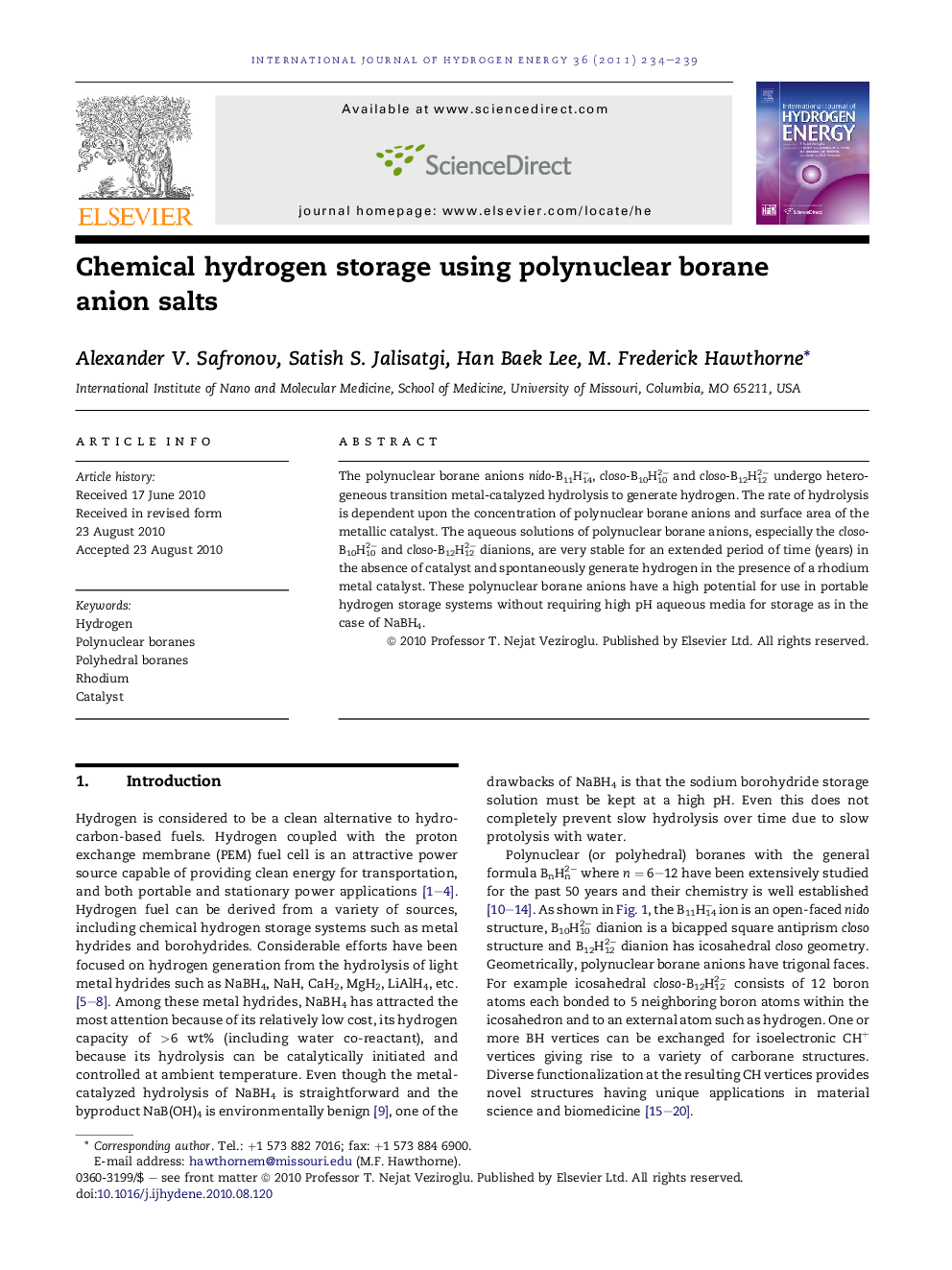| Article ID | Journal | Published Year | Pages | File Type |
|---|---|---|---|---|
| 1277770 | International Journal of Hydrogen Energy | 2011 | 6 Pages |
Abstract
The polynuclear borane anions nido-B11H14−, closo-B10H102− and closo-B12H122− undergo heterogeneous transition metal-catalyzed hydrolysis to generate hydrogen. The rate of hydrolysis is dependent upon the concentration of polynuclear borane anions and surface area of the metallic catalyst. The aqueous solutions of polynuclear borane anions, especially the closo-B10H102− and closo-B12H122− dianions, are very stable for an extended period of time (years) in the absence of catalyst and spontaneously generate hydrogen in the presence of a rhodium metal catalyst. These polynuclear borane anions have a high potential for use in portable hydrogen storage systems without requiring high pH aqueous media for storage as in the case of NaBH4.
Related Topics
Physical Sciences and Engineering
Chemistry
Electrochemistry
Authors
Alexander V. Safronov, Satish S. Jalisatgi, Han Baek Lee, M. Frederick Hawthorne,
